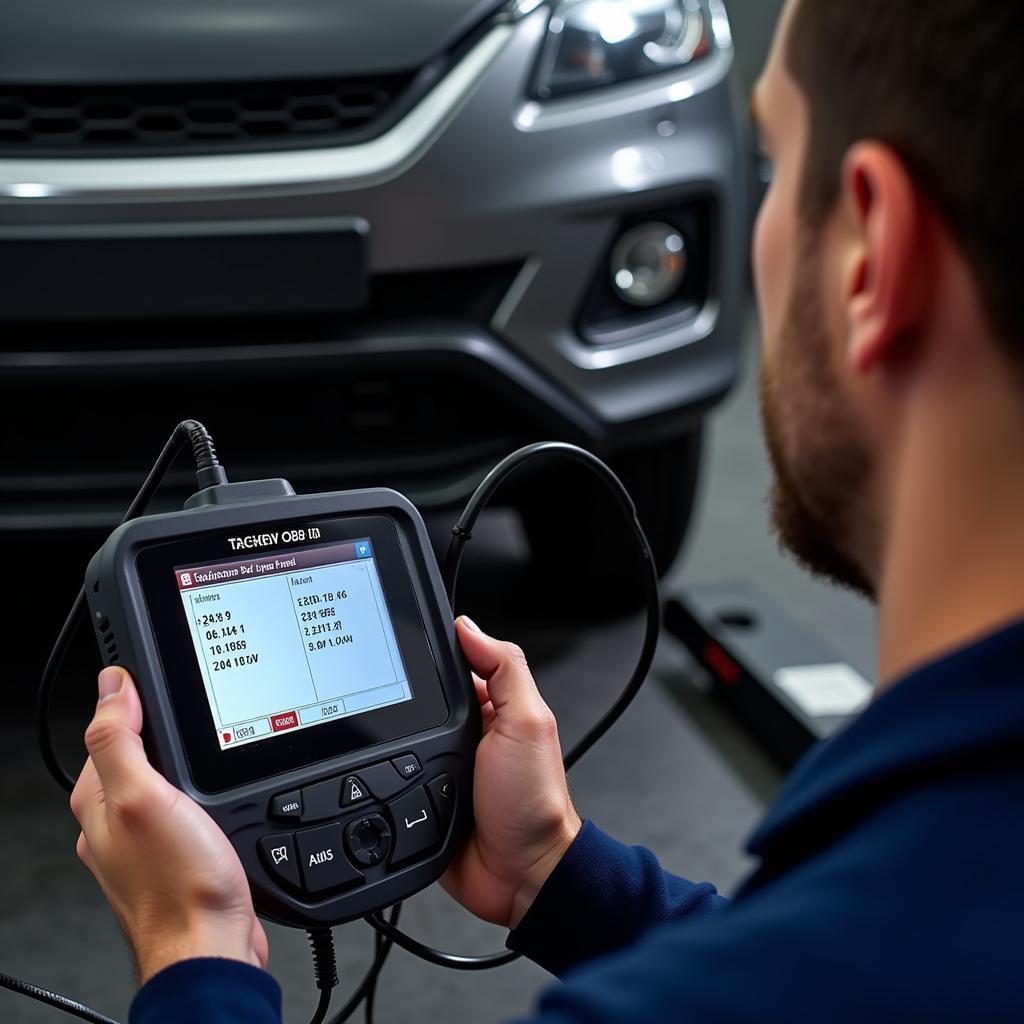A Car With Electrical Problems can be a frustrating experience, leaving you stranded and unsure of the next step. This comprehensive guide will equip you with the knowledge and tools to diagnose and potentially fix those electrical gremlins, whether you’re a car owner, a mechanic, or an automotive technician.
Electrical issues in cars can range from minor inconveniences like a flickering headlight to major malfunctions that leave your vehicle completely immobile. Understanding the complexities of a car’s electrical system can seem daunting, but with a systematic approach, you can often pinpoint the problem area and determine the best course of action. Just after you check the battery, you might want to read about how completely rewiring old british car solves all problems.
Common Electrical Problems in Cars
Several electrical components are prone to failure. Here’s a breakdown of common culprits:
- Battery: The heart of your car’s electrical system, a failing battery can cause a multitude of issues, from a slow crank to a complete no-start.
- Alternator: Responsible for recharging the battery, a faulty alternator can lead to a dead battery and other electrical malfunctions.
- Starter: The starter engages the engine, and a malfunctioning starter can prevent the car from starting altogether.
- Wiring: Damaged or corroded wiring can interrupt the flow of electricity, causing various electrical problems.
- Fuses: These small safety devices protect circuits from overloading. A blown fuse can disable a specific electrical component.
- Relays: Relays act as electrical switches, controlling the flow of power to various systems. A faulty relay can cause a component to malfunction.
Diagnosing Car Electrical Problems
Diagnosing electrical problems requires a methodical approach. Here’s a step-by-step guide:
- Check the Battery: The first step is to check the battery voltage using a multimeter. A healthy battery should read around 12.6 volts.
- Inspect the Alternator: With the engine running, the alternator should output around 14 volts.
- Test the Starter: If the battery and alternator are fine, the starter may be the issue. You can test the starter by trying to start the car and listening for a clicking sound.
- Examine the Wiring: Look for any signs of damage, corrosion, or loose connections.
- Check the Fuses: Locate the fuse box and inspect the fuses for any blown ones. Replace any blown fuses with the correct amperage rating.
- Test the Relays: Relays can be tested using a multimeter or by swapping them with a known good relay.
How to Fix Some Common Car Electrical Problems?
Some electrical problems can be fixed easily, while others require professional help. Here are some tips for fixing common issues:
- Replacing a Blown Fuse: Replacing a blown fuse is a simple process that can be done by anyone.
- Jump-Starting a Dead Battery: Jump-starting a dead battery is a temporary fix, but it can get you back on the road.
- Cleaning Corroded Battery Terminals: Cleaning corroded battery terminals can improve the electrical connection and solve some starting problems. For other electrical issues, you can find help from sites like completely rewiring old british car solves all problems.
“Electrical problems can be tricky,” says John Miller, a seasoned automotive electrician at Miller’s Auto Electric. “A systematic approach, combined with the right tools, is crucial for accurate diagnosis and effective repair.”
Why is My Car Experiencing Electrical Problems?
Electrical problems can stem from various factors, including age, wear and tear, environmental conditions, and even improper installation of aftermarket accessories. It’s always best to take your vehicle to a professional electrician if you’re unsure what to do. Check out our article on how to solve kenwood car stereo playing bluetooth problems for assistance with specific stereo issues.
 Mechanic Diagnosing Car Electrical System
Mechanic Diagnosing Car Electrical System
“Regular maintenance and inspections can prevent many electrical problems before they occur,” advises Susan Davis, lead technician at Davis Automotive Solutions. “A simple check of the battery, alternator, and wiring can save you from costly repairs down the road.” Here’s a link on how to troubleshoot your bmw x3 keeping car straight problem.
Conclusion
Dealing with a car with electrical problems can be challenging, but understanding the common causes and employing a systematic diagnostic approach can simplify the process. This guide provides a starting point for troubleshooting electrical issues, empowering car owners and mechanics alike. If you are unsure, having professional assistance is always best. You can look into issues like forza horizon 4 car sound problem or kenwood car stereo bluetooth volume problem. Connect with us at AutoTipPro for expert advice and support. Call us at +1 (641) 206-8880 or visit our office at 500 N St Mary’s St, San Antonio, TX 78205, United States.




Leave a Reply